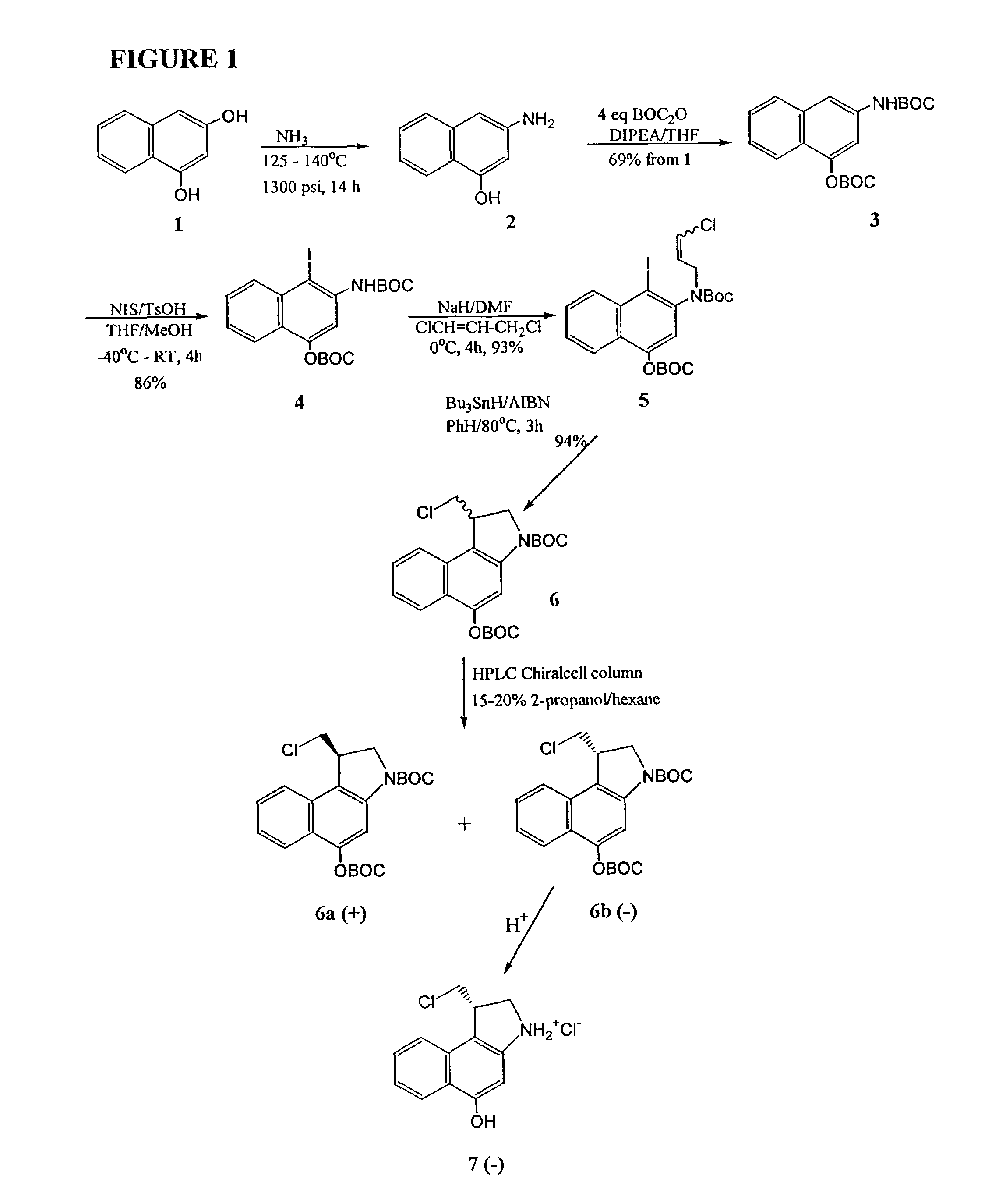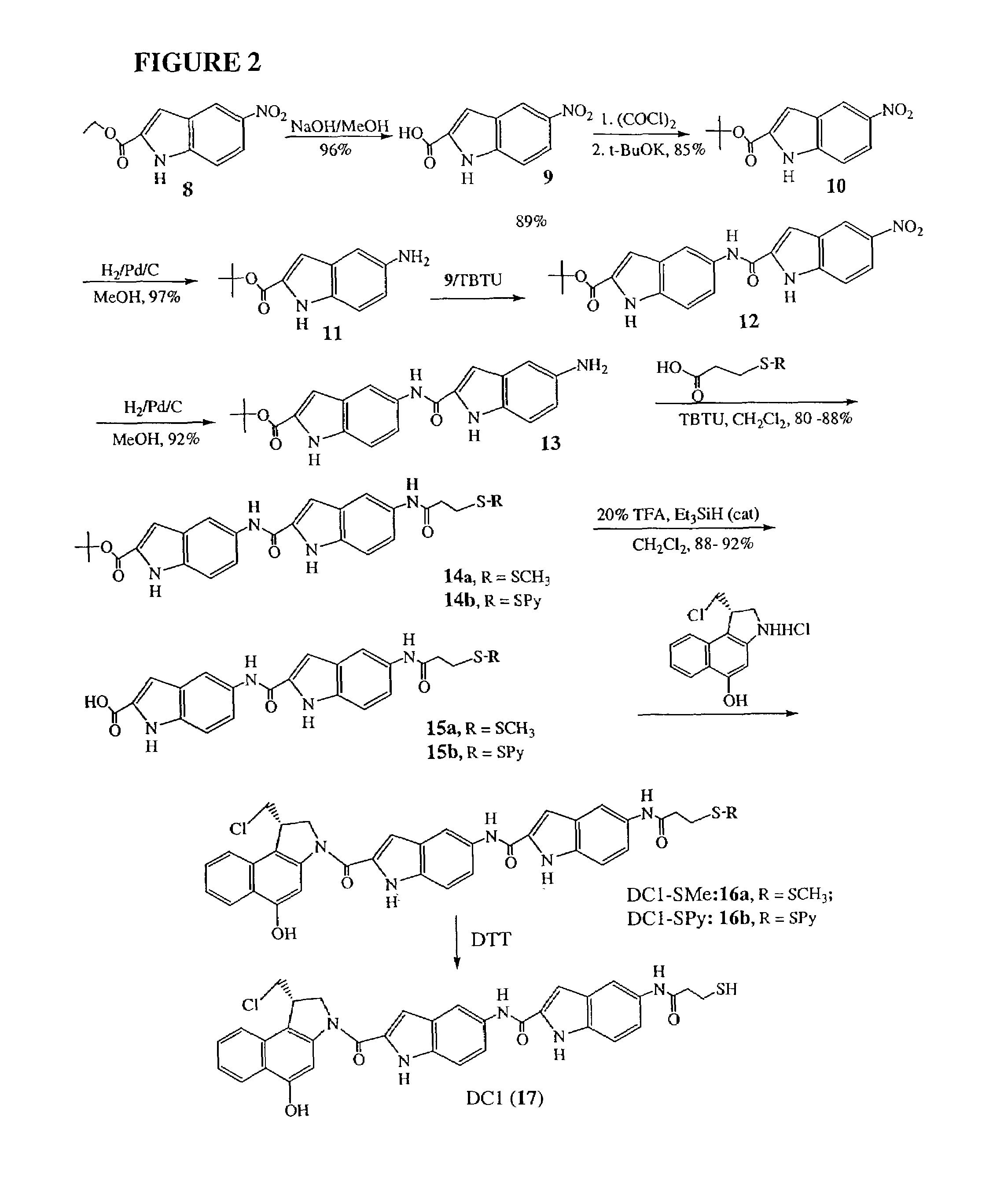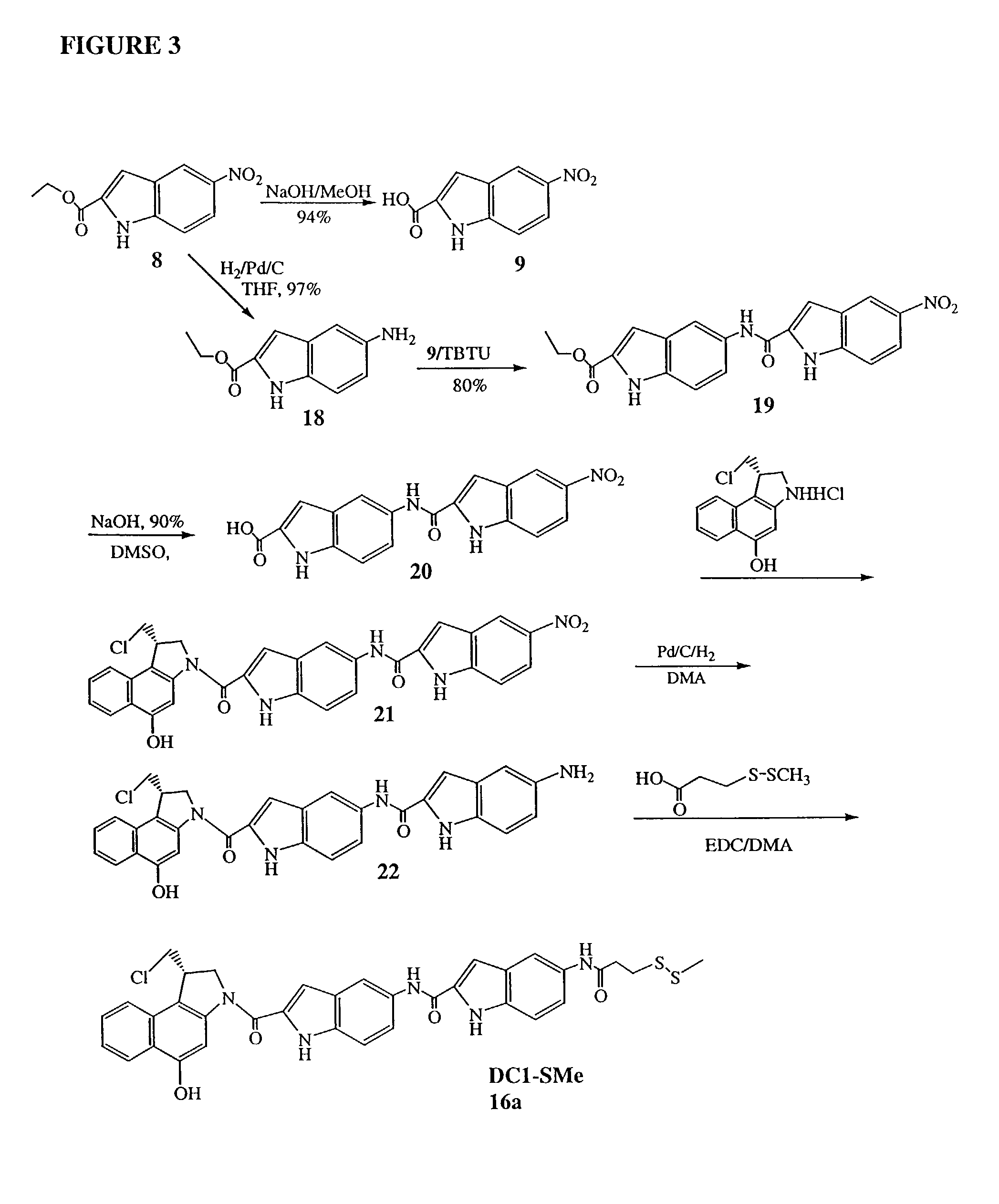CC-1065 analog synthesis
a technology of analog synthesis and cytotoxic antitumor, which is applied in the direction of antibacterial agents, drug compositions, chemical production, etc., can solve the problems of the efficiency of the separation process, and the loading capacity of the column, so as to reduce the processing time and reduce the processing time. , the effect of reducing the number of protection and deprotection steps, and reducing the processing tim
- Summary
- Abstract
- Description
- Claims
- Application Information
AI Technical Summary
Benefits of technology
Problems solved by technology
Method used
Image
Examples
examples
[0049]The invention will now be illustrated by reference to certain non-limiting examples. Unless otherwise stated, all percentages, ratios, parts, and the like, are by weight. A summary of the exemplary syntheses (FIGS. 1-3) is followed by a detailed description of each step.
[0050]The improved synthesis of CBI exemplified herein (FIG. 1) starts with 1,3-dihydroxy-naphthalene (1). Amination by treatment with ammonia at 125 to 140° C. in a pressure vessel provided 4-hydroxy-2-napthylamine 2, which was then converted to the di-t-boc compound 3 by treatment with di-tert-butyldicarbonate. Iodination with N-iodosuccinimide proceeded in 86% yield to produce 4, which was alkylated to give compound 5 in 93% yield. Ring closure of 5 using tri-butyltin hydride in the presence of 2,2′-azobisisobutyronitrile (AIBN) proceeds smoothly in 94% yield to give the racemic di-t-boc-seco-CBI 6 in 94% yield. Separation of the racemic mixture is readily performed using a chiral HPLC column eluting with 20...
examples 1-5
Synthesis of seco(−)CBI (5-hydroxy-3-amino-1-[S]-(chloromethyl)-1,2-dihydro-3H-benz(e)indole)According to the Scheme of FIG. 1
example 1
Preparation of N-(tert-butyloxycarbonyl)-4-O-(tert-butyloxycarbonyl)-2-naphthylamine (3)
[0056]A solution of 1,3-dihydroxynaphthalene (1, 50 g, 0.312 mol) in liquid ammonia (200 mL) at −78° C. was sealed in a 1 L steel bomb containing a glass liner. The reaction mixture was warmed to 135±10° C. and 1300 psi for 14 h with vigorous stirring. The vessel was allowed to cool to 60° C., and the ammonia was released slowly. The remaining traces of ammonia were removed by co-evaporation with THF (2×150 mL) under a stream of argon at 60° C. The intermediate 4-hydroxy-2-naphthylamine (2) was not isolated but was immediately converted to the di-tert-butyloxycarbonyl protected compound 3. A solution of di-tert-butyl dicarbonate (175 g, 0.801 mol) in dry THF (300 mL) and N,N-diisopropylethylamine (140 mL, 0.803 mol) were sequentially added to the bomb. The bomb was re-sealed, and the contents were warmed at 100° C. with stirring for 4 h. The bomb was cooled to room temperature, opened, and the re...
PUM
| Property | Measurement | Unit |
|---|---|---|
| variable wavelength detector | aaaaa | aaaaa |
| temperature | aaaaa | aaaaa |
| temperature | aaaaa | aaaaa |
Abstract
Description
Claims
Application Information
 Login to View More
Login to View More - R&D
- Intellectual Property
- Life Sciences
- Materials
- Tech Scout
- Unparalleled Data Quality
- Higher Quality Content
- 60% Fewer Hallucinations
Browse by: Latest US Patents, China's latest patents, Technical Efficacy Thesaurus, Application Domain, Technology Topic, Popular Technical Reports.
© 2025 PatSnap. All rights reserved.Legal|Privacy policy|Modern Slavery Act Transparency Statement|Sitemap|About US| Contact US: help@patsnap.com



